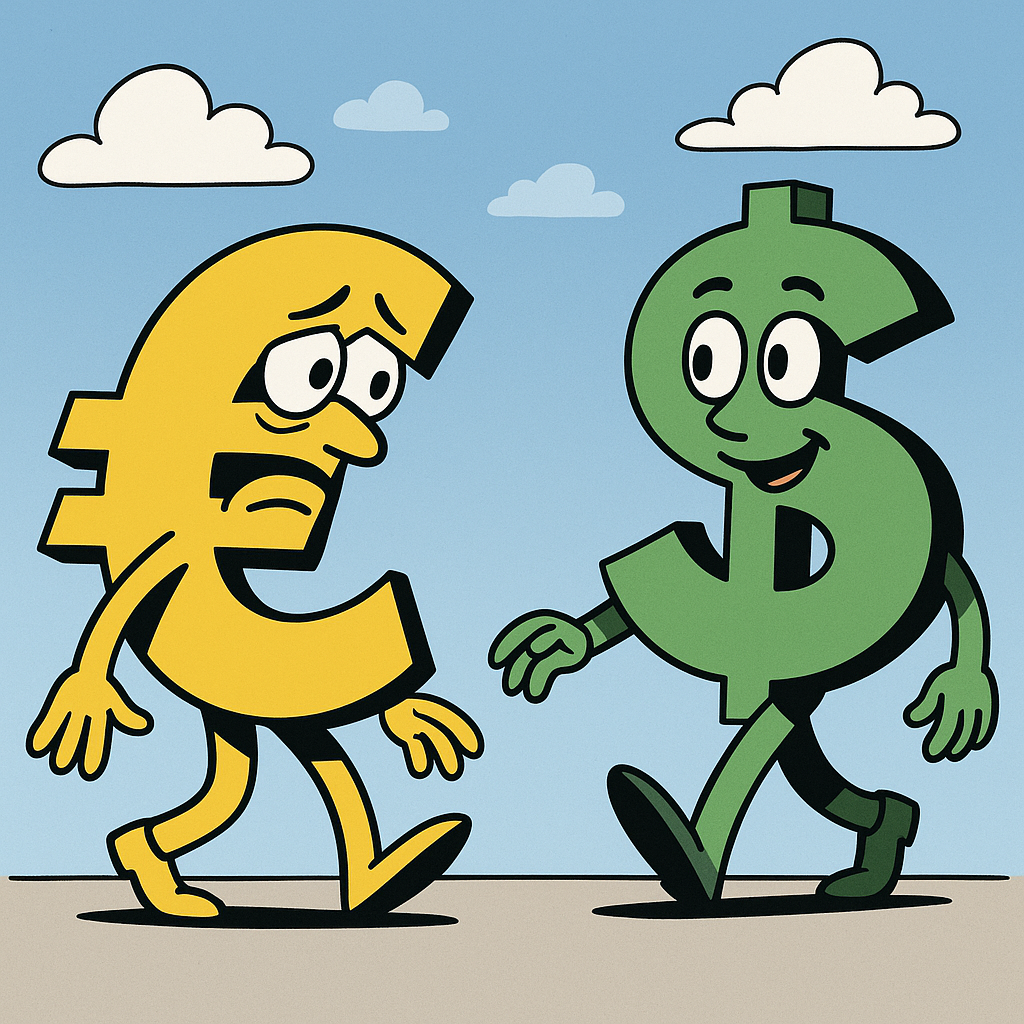
A materially lower U.S. dollar—meaning a significant and sustained depreciation in its value relative to other major currencies—can ripple through global markets, and for Europe, it brings a complex mix of economic consequences. From export competitiveness to inflation, investment flows, and monetary policy dynamics, the effects are broad-reaching. Here’s a closer look at what a weaker dollar means for Europe.
1. Strengthening of the Euro
When the USD weakens materially, it typically results in a stronger euro. This is because currency exchange rates are relative—if the dollar falls, other currencies rise in comparison, assuming all else remains equal. A stronger euro can have several important implications for the European economy:
Exports Become Less Competitive: European goods become more expensive for buyers in dollar-denominated markets. This could hurt major export-driven economies like Germany, which relies heavily on machinery, automobiles, and industrial goods sales abroad. Cheaper Imports: On the flip side, a stronger euro makes imports from the U.S. and other dollar-based economies cheaper. This could help reduce input costs for European manufacturers and benefit consumers by lowering the prices of imported goods such as electronics, technology, and oil (which is priced in USD).
2. Impact on Inflation
One of the more immediate effects of a weaker USD is downward pressure on inflation in Europe.
Imported Disinflation: With the euro buying more per dollar, import prices fall, potentially contributing to lower consumer prices across the Eurozone. While this may seem beneficial for households, it can be a challenge for the European Central Bank (ECB), especially if the economy is already grappling with low inflation or deflationary trends. ECB Policy Tensions: Lower inflation may prompt the ECB to delay tightening monetary policy or even consider additional stimulus to meet its price stability mandate. This could lead to divergence between ECB and Fed policies, further affecting exchange rates and capital flows.
3. Capital Flows and Investment
Currency movements heavily influence global investment patterns.
Attractiveness of European Assets: As the USD declines, European equities and bonds become more attractive to dollar-based investors seeking returns in appreciating currencies. This can increase foreign capital inflows into European markets. Tourism Boost: A stronger euro could reduce the number of American tourists visiting Europe due to higher costs. However, European tourists would benefit from stronger purchasing power abroad, especially in the U.S.
4. Geopolitical and Trade Balance Considerations
U.S. Trade Advantage: A weaker dollar helps U.S. exporters by making their goods cheaper, potentially widening Europe’s trade deficit with the U.S. This could intensify transatlantic trade tensions, particularly if European manufacturers lose market share in key sectors. Rebalancing Global Trade: For countries with current account surpluses like Germany and the Netherlands, a weaker USD could push policymakers to rethink strategies toward more domestic consumption rather than export reliance.
5. Sectoral Winners and Losers in Europe
Some European sectors may actually benefit from a lower USD:
Luxury Goods: Brands like LVMH and Hermès, which cater to wealthy global consumers, may see stable demand regardless of currency fluctuations. Airlines and Transportation: Lower USD may translate to cheaper jet fuel costs, potentially benefiting European carriers.
Conversely, sectors like automotive, industrial manufacturing, and agriculture—which rely heavily on global exports—could feel the pinch from a less competitive pricing position.
Conclusion
A materially lower U.S. dollar is a double-edged sword for Europe. While it may ease import costs and attract investment, it also challenges the region’s export-oriented industries and complicates the ECB’s policy efforts. For European policymakers, businesses, and investors, the key lies in navigating these shifts with agility—balancing the benefits of stronger purchasing power against the risks to competitiveness and economic momentum.
